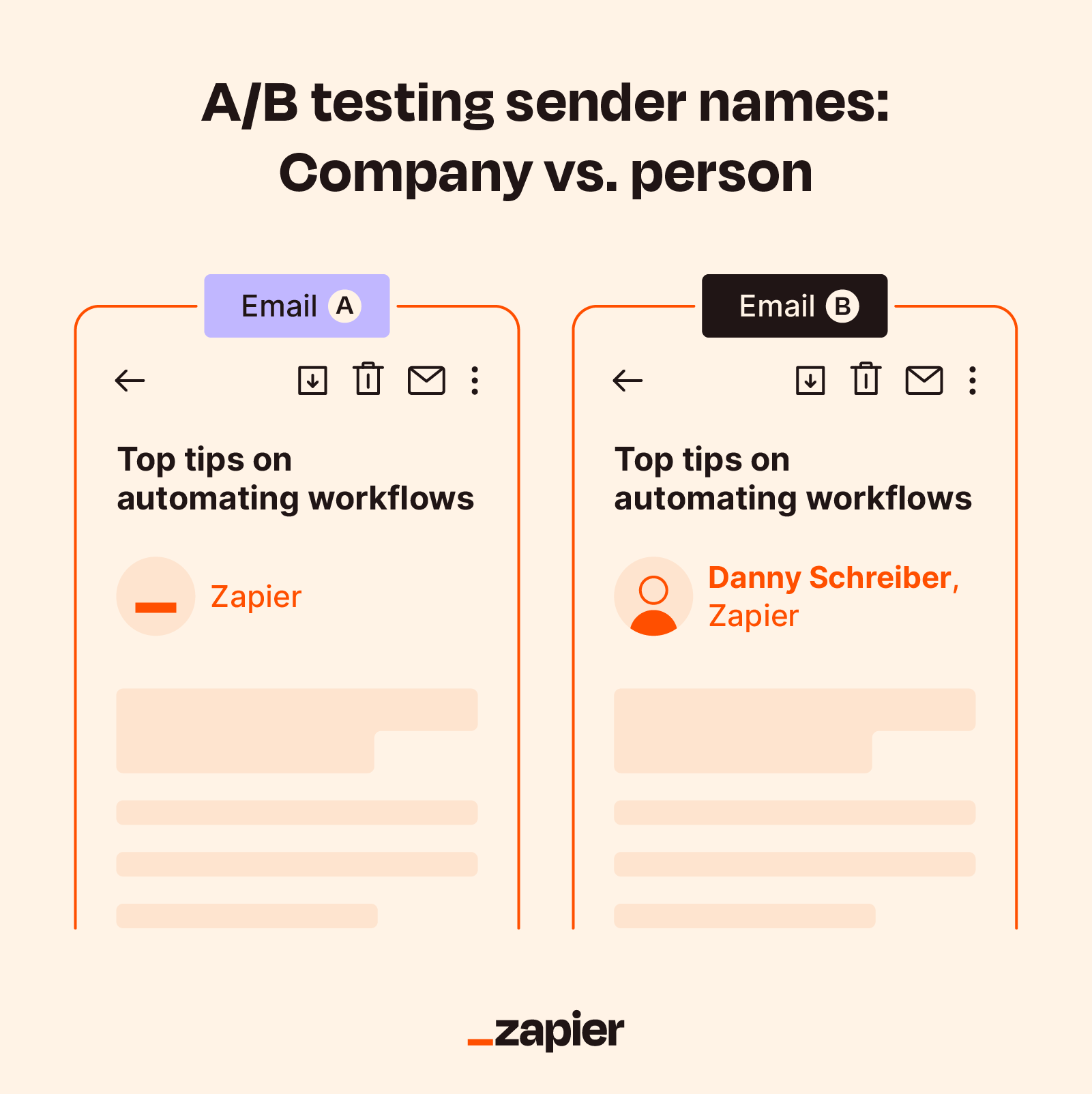A/B testing in email marketing helps optimize campaigns. It identifies what works best for your audience.
In email marketing, getting the best results is crucial. You want your emails to engage and convert. But how do you know which elements work best? This is where A/B testing comes in. By comparing two versions of an email, you can see which one performs better.
A/B testing helps you understand your audience’s preferences. It allows you to make data-driven decisions. This way, you can improve open rates, click-through rates, and overall effectiveness. Let’s explore how A/B testing can benefit your email marketing efforts.

Credit: zapier.com
Introduction To Ab Testing
AB testing helps find out which email version works better. It is a way to compare two versions of an email. This helps improve email marketing results. Marketers can see what their audience likes more. This can lead to more clicks and sales.
Testing different subject lines, images, and content is key. Small changes can make a big difference. This helps understand what works best for the audience. Better emails mean better engagement.
AB testing involves two groups. One group gets version A, and the other gets version B. The results show which version performs better. This is simple but very effective.
Important metrics include open rates and click rates. These show how many people open and click the email. Higher rates mean more interest. AB testing helps improve these rates.
Setting Up Ab Testing
Choose one variable to test. This can be the subject line, email content, or call-to-action. Testing too many variables can confuse the results. Keep it simple for clear insights. Focus on what you want to improve. Use data to guide your choices. Pick variables that impact your goals the most. This helps you see what works best.
Form a clear hypothesis. This is a guess on what will work better. For example, “A shorter subject line will get more opens.” Always base your hypothesis on data or past results. This makes your test meaningful. It also gives you direction. Write down your hypothesis before you start. This helps you stay focused. Compare the results to see if your guess was right. Use this to improve your emails.
Designing Test Emails
Test different subject lines to see which one gets more opens. Short subject lines can be more effective. Use clear and simple words. Avoid complicated language. Personalize the subject line with the recipient’s name. This can grab their attention. Experiment with questions or numbers in the subject line.
Test various email content to find what works best. Use different layouts and designs. Some people prefer text-heavy emails. Others like more images. Try both to see what gets more clicks. Change the length of the content. Short emails may be more engaging. But detailed emails can also be useful. Include a clear call-to-action. This helps guide the reader on what to do next.
Audience Segmentation
Segments help to group your email subscribers. They can be grouped by age, location, or interests. This helps in sending the right message to the right audience. It makes your emails more personal and effective.
Random assignment means each subscriber gets a different email version. This helps in testing which version works better. It ensures fair testing and accurate results. You can then see which email gets more clicks or responses.
Executing Ab Tests
AB testing helps to find the best email version. It involves sending different emails to different groups. Each group gets a different version. This shows which version works better. Results are then compared. The winning version is used more often. This increases engagement and success.
Monitoring delivery is key. Check if emails reach inboxes. Look at open rates and click rates. Measure bounce rates too. These metrics help to judge success. If delivery is poor, make changes. Improve subject lines or content. This ensures better results in future tests.
Analyzing Results
Open rates show how many people open your email. Click-through rates measure clicks on links in your email. Conversion rates track actions like purchases or sign-ups. These metrics help understand what works best. Bounce rates tell if emails reach inboxes or get rejected. Unsubscribe rates show how many people leave your list.
Statistical significance means results are not by chance. It shows if changes in your email make a real difference. Use A/B testing to compare two versions of an email. This helps find the best one. Always aim for a clear winner. This ensures your email strategy is effective.
Interpreting Data
AB testing helps in gathering accurate data. This data shows what works best in emails. Small changes can make a big difference. For example, changing a subject line can boost open rates. By comparing results, you can see which version is better. This helps you understand what your audience likes.
Testing helps avoid guesswork. Decisions are based on real evidence. With clear data, you can draw better conclusions. This makes your emails more effective.
AB testing guides smart decision-making. It shows what changes improve engagement. For example, testing call-to-action buttons can lead to more clicks. This means more people will take action. Decisions based on AB testing are informed and smart.
By testing, you can decide what works best. This makes your emails more successful. Testing leads to better results. It helps you focus on what truly works.

Credit: www.campaignmonitor.com
Optimizing Future Campaigns
AB testing helps find what works best. Try two versions of an email. See which one gets more clicks. Use the winning version for future emails. This way, emails get better over time. Small changes can make a big difference.
Keep testing new ideas. Never stop learning. Look at the results. Make small tweaks. Over time, your emails will improve. Better emails mean more happy customers. Happy customers are good for business.

Credit: www.constantcontact.com
Frequently Asked Questions
What Is A/b Testing In Email Marketing?
A/B testing in email marketing involves sending two versions of an email to a small audience segment. This helps determine which version performs better based on metrics like open rates and click-through rates.
Why Is A/b Testing Important In Email Marketing?
A/B testing is crucial because it helps optimize email campaigns. It allows marketers to understand what content and design resonate best with their audience, leading to higher engagement.
How Does A/b Testing Improve Email Performance?
A/B testing improves email performance by identifying the most effective elements. By comparing different versions, marketers can refine subject lines, content, and design to boost open rates and conversions.
What Elements Can Be Tested In A/b Testing?
In A/B testing, you can test various elements like subject lines, email copy, images, call-to-action buttons, and send times. This helps determine what appeals most to your audience.
Conclusion
AB testing in email marketing helps improve your campaigns. It finds what works best. Small changes can boost engagement. Test subject lines and content. Measure and analyze results. Make data-driven decisions. This process ensures better connections with your audience. Improved engagement leads to higher success rates.
Keep testing and refining. Your email marketing will benefit greatly. Simple steps lead to big improvements.










